Interior Build
It’s been a while since I’ve updated on the Candlefish build. We’ve been working on the interior, bulkheads, seats, & compartments, as well as the final trim work.
The bow has flotation in the forefoot and a storage compartment for an anchor, pfds, etc. The foredeck has a lip to allow it to be used as a work surface and hosed off afterwards.
Bow compartment
CAD: Cardboard Aided Design
Finished template
Clamping the bow deck
Bow deck installed
Bow compartment
Bow compartment
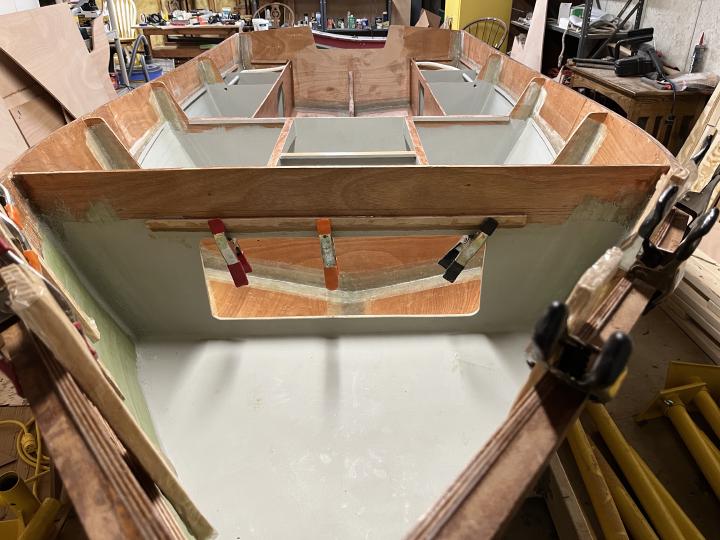
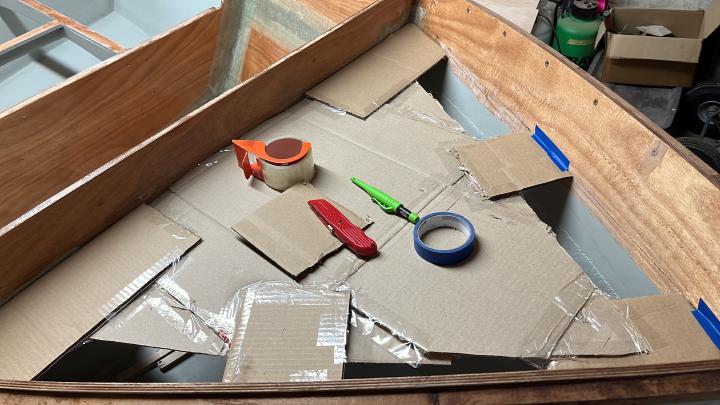
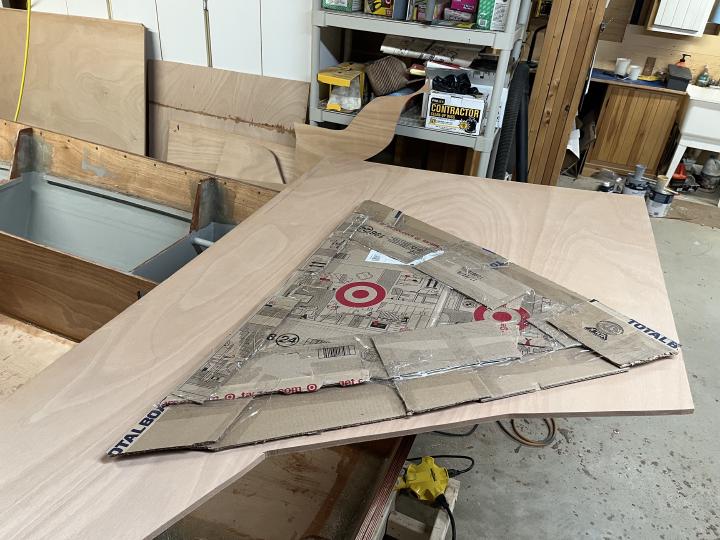
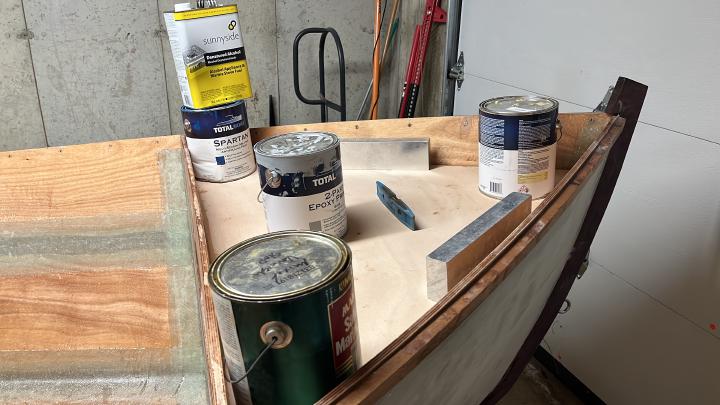
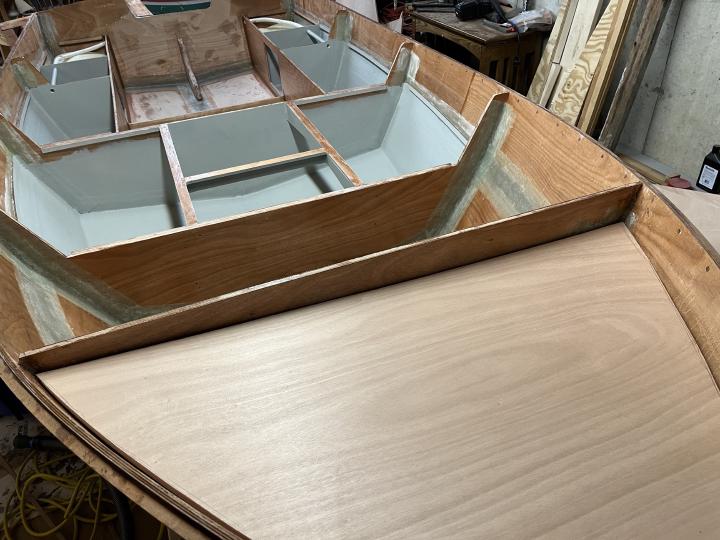
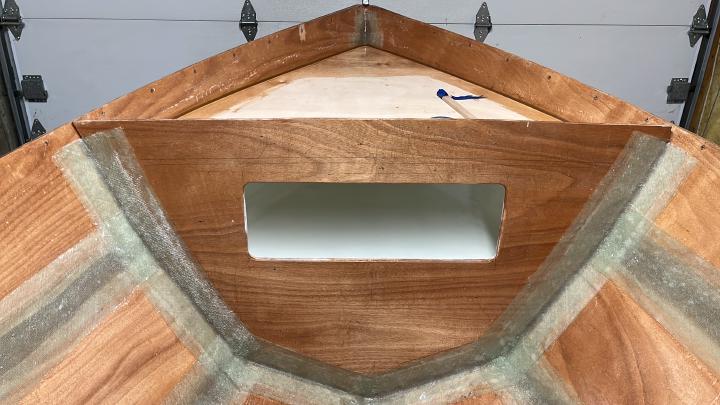
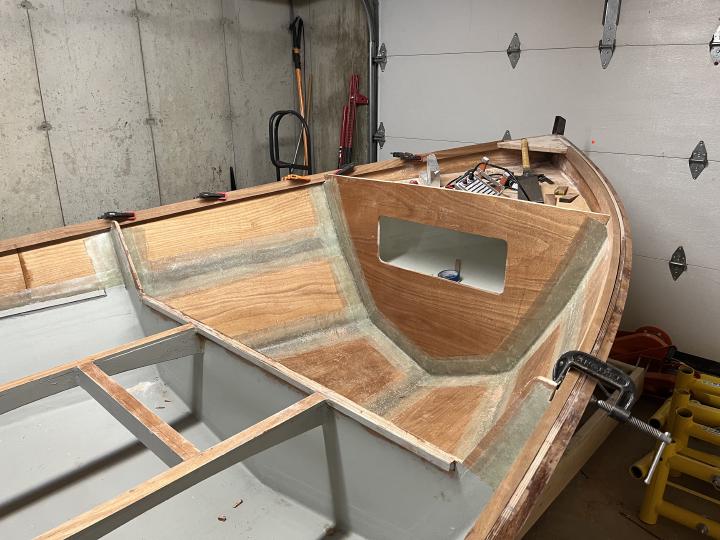
The outwale is epoxied and screwed in place, then the inwale is set into notches in the bulkheads. Together the give stiffness to the sheer.
Clamping the outwale
Notching for inwales
Clamping the inwale
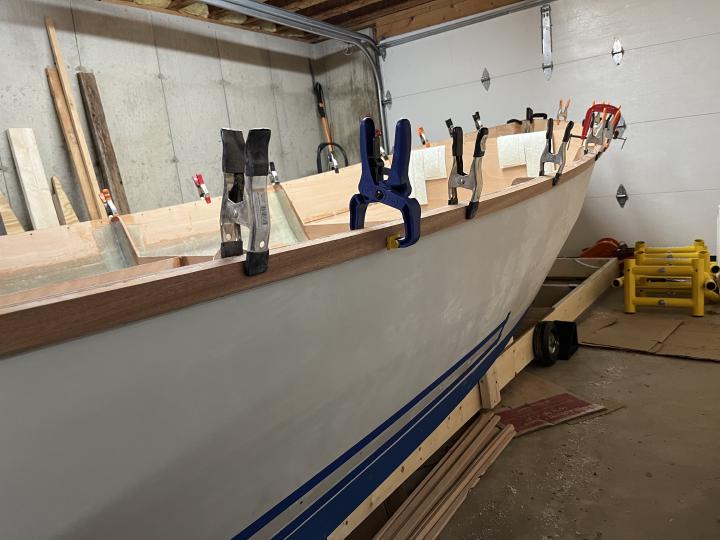
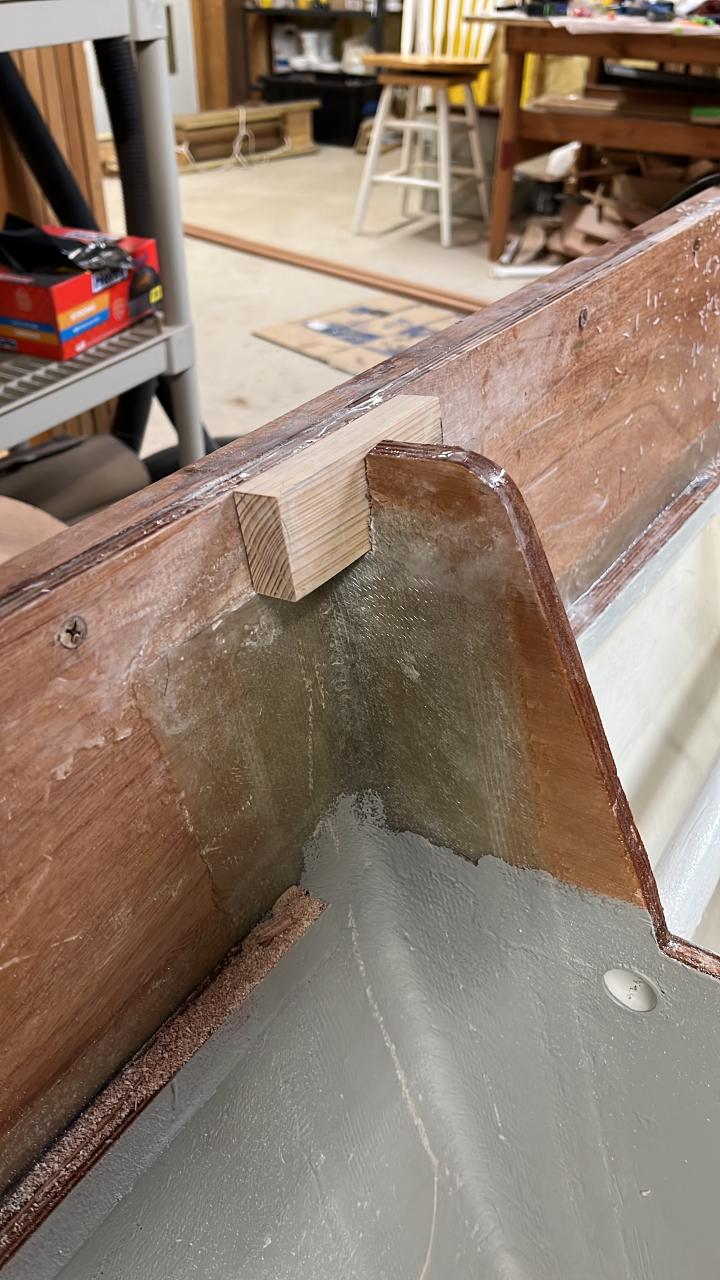
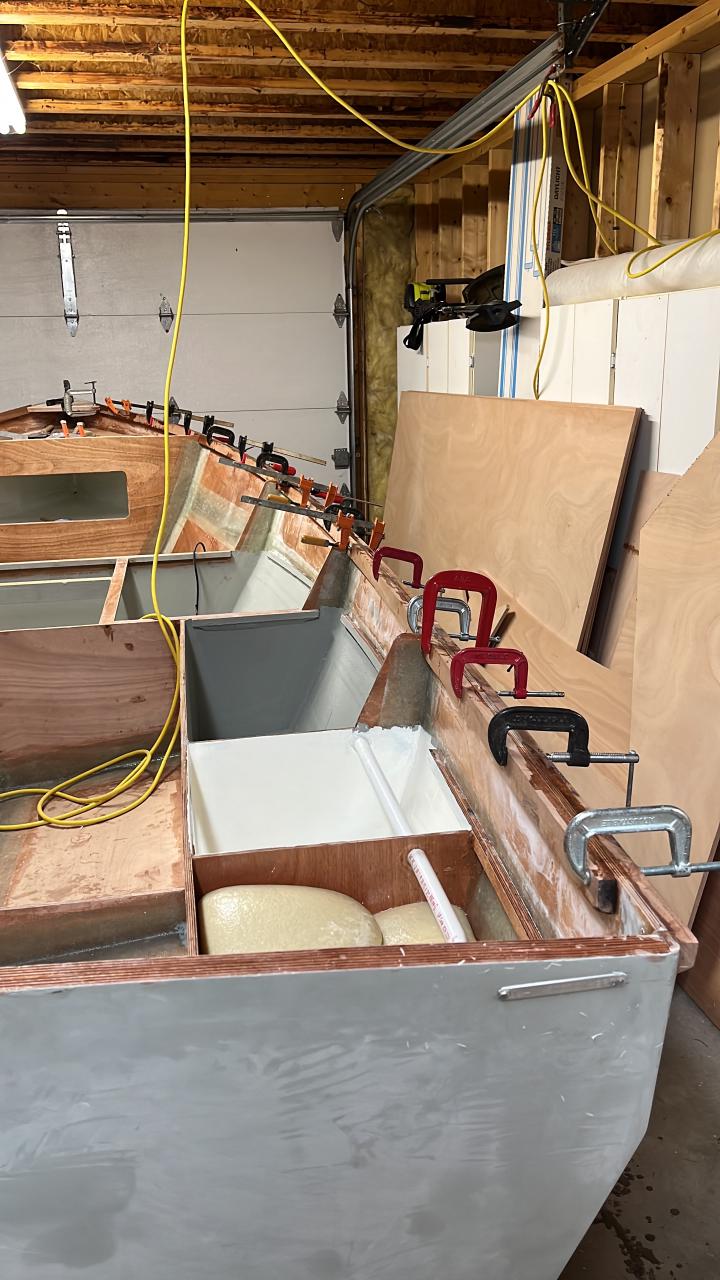
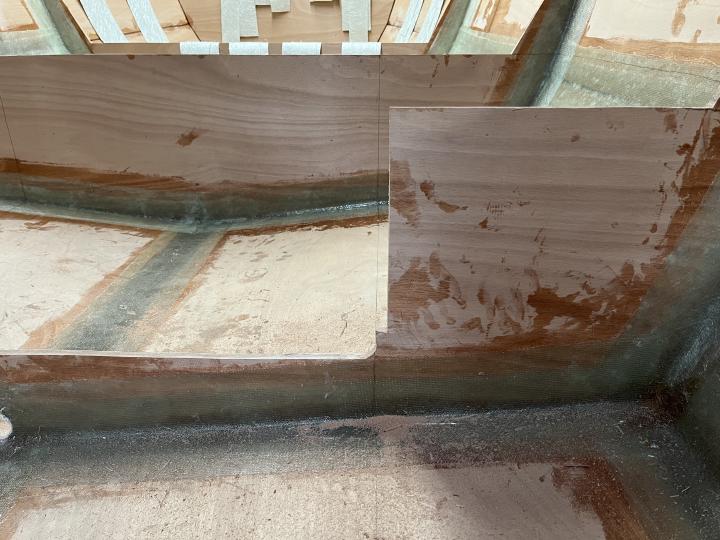
Cutting bulkhead 4
We also need flotation foam in the aft so that she’ll float upright and level if she ever gets swamped. To simplify electrical install down the line, we run PVC wire races through the sealed compartment. The battery, fuses, and switching will probably go in the center compartment on this boat, but we’ll need to get wires aft for the all around navigation light, and maybe for electric start on the engine or a VHF radio antenna.
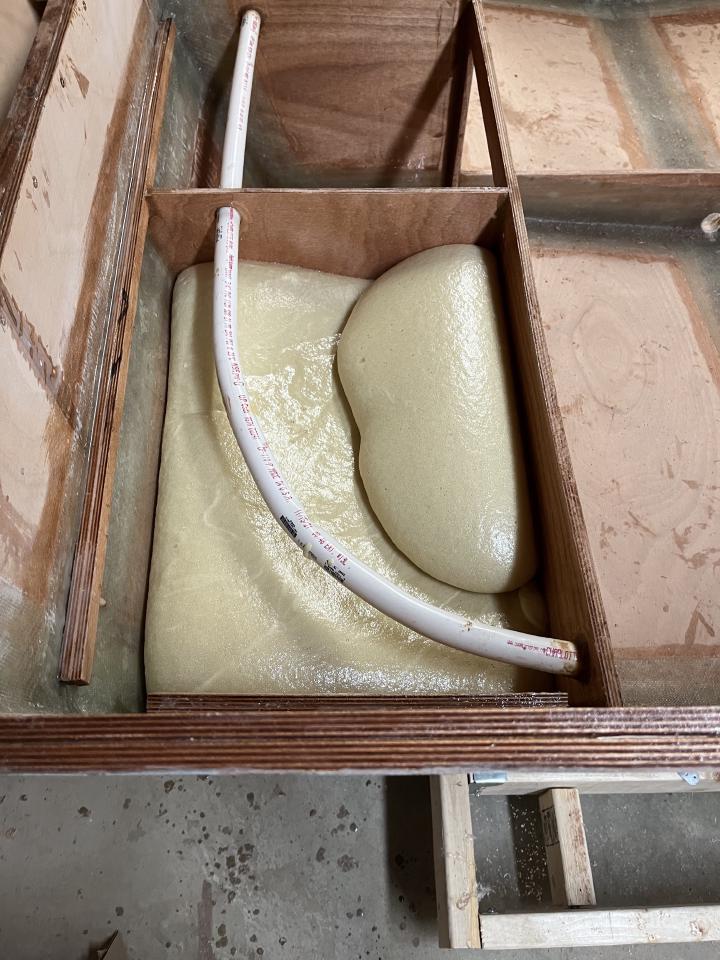
Flotation and wire race
The seats need to be fit carefully against the curve of the bulkhead. A Joggle stick lets us record a complex shape and transfer it onto the seat stock.
Joggle stick
Notching the seat to fit bulkheads
Fitting a seat top
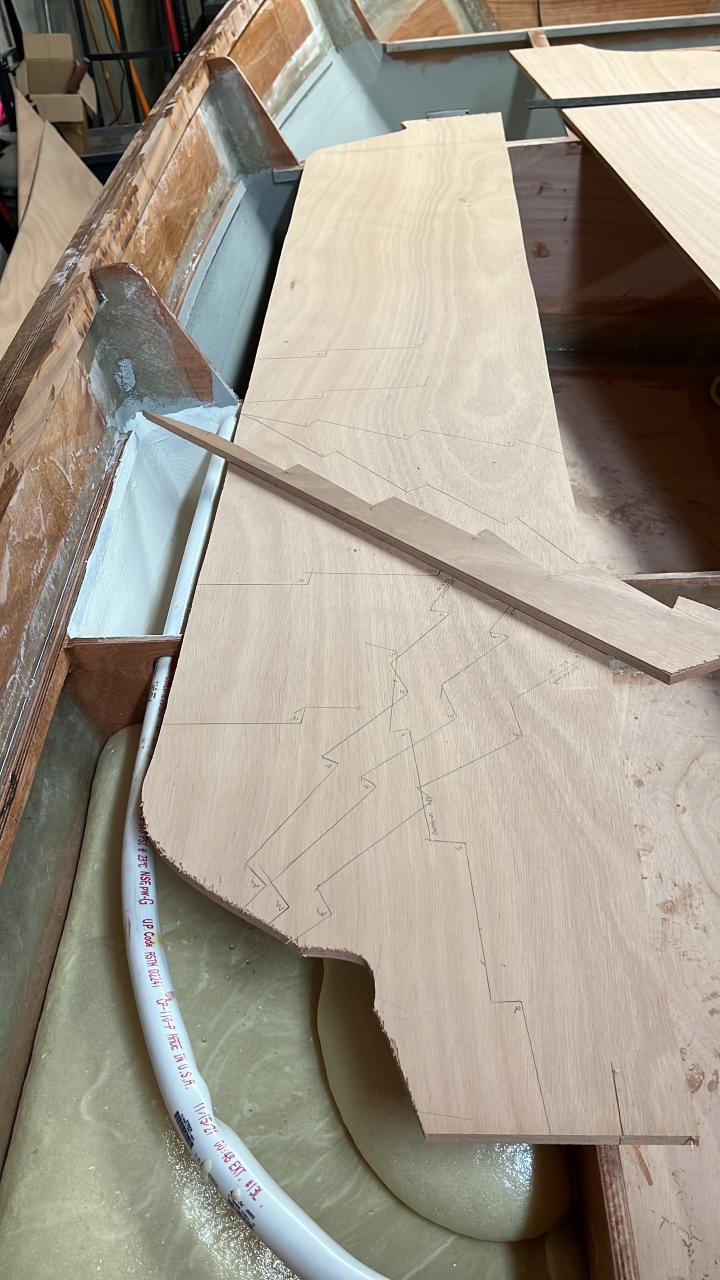
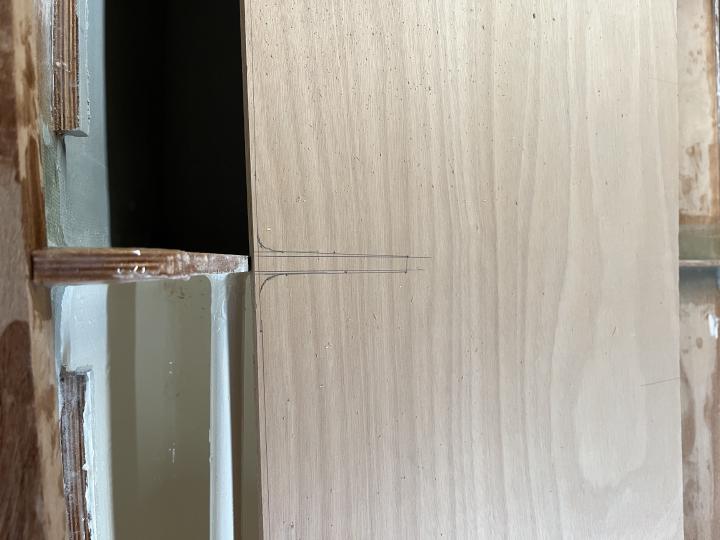
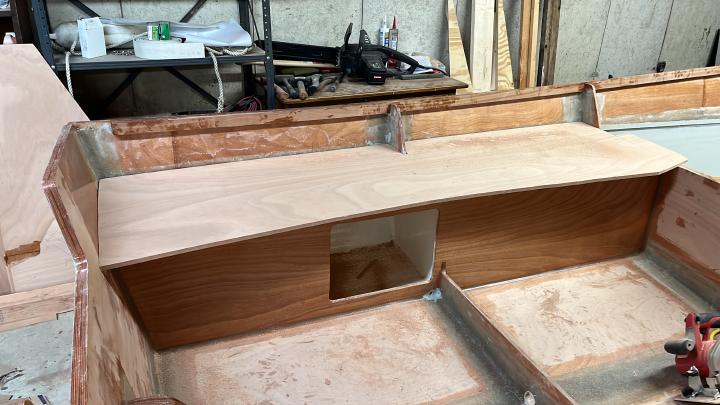
Laminating knees
Fitting knees
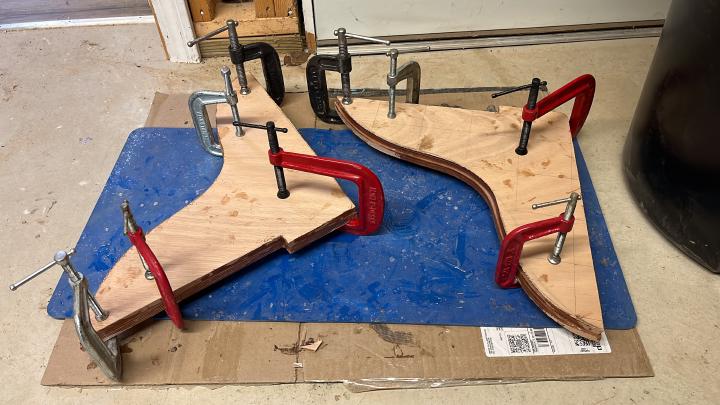
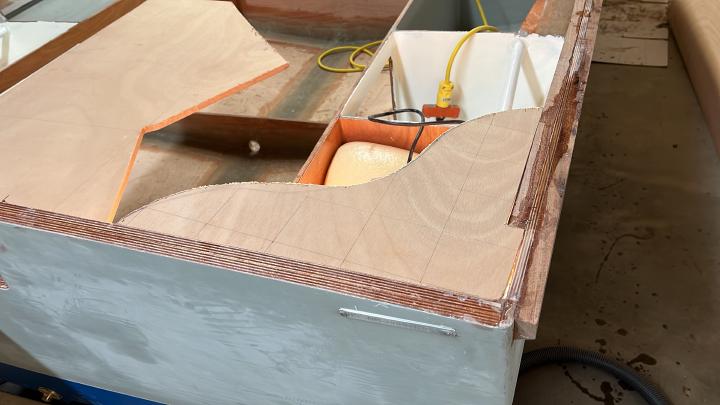
The capacity plate is a required decal that tells the owner of the boat how much they can safely put in the boat and how large an engine they can mount. The US Coast Guard provides lots of information on how to calculate these numbers here https://safeafloat.com/ along with plenty of information about the requirements of building boats for sale. If you’re building at home, for your own use, a lot of these regulations won’t apply, but it’s still worth thinking hard about these figures and how much flotation you really need to install to be safe. We use Garzon Studios to print these; they specialize in reprints of historical boat decals, but do a great job with one-off stickers that meet the current regulations.
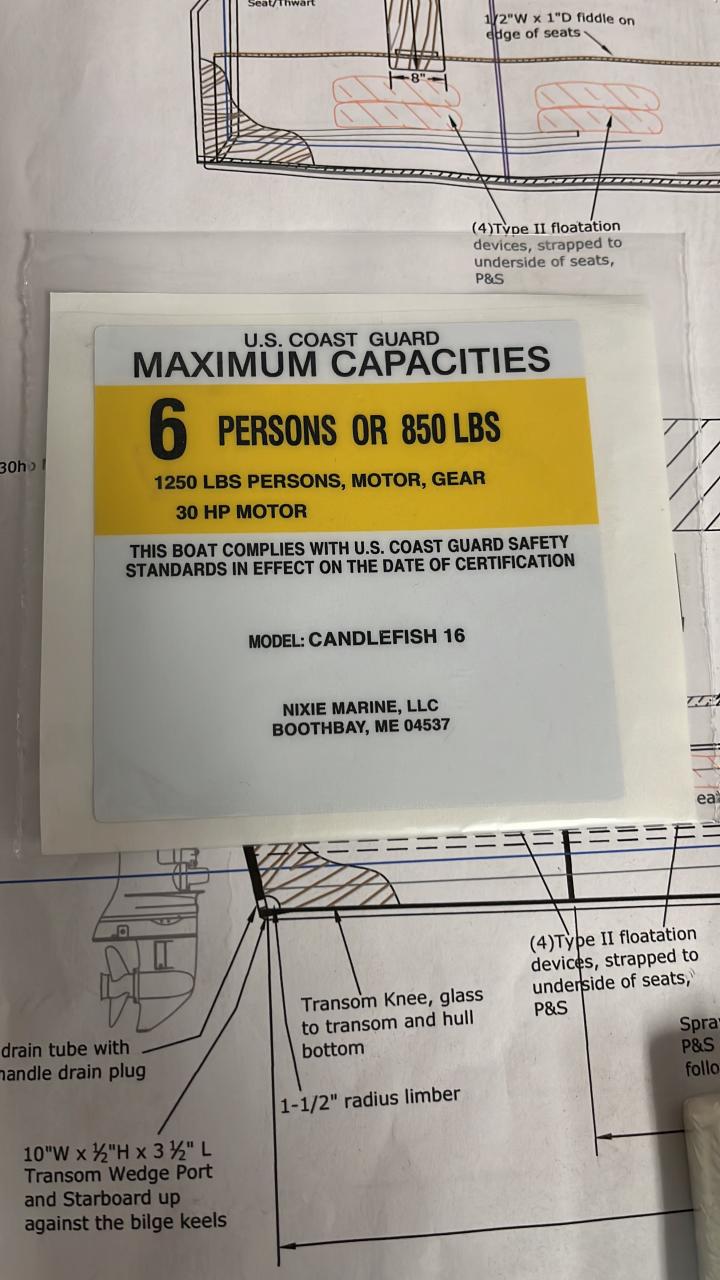
Capacity plate